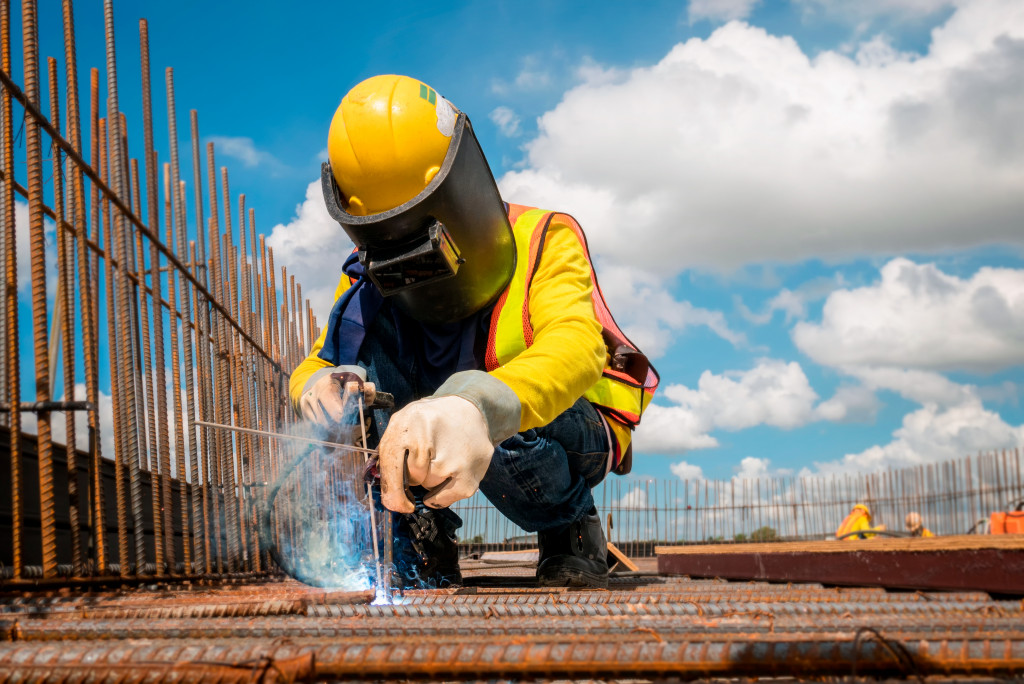Work-related accidents and injuries are a common occurrence. According to the International Labor Organization (ILO), about 340 million occupational accidents and 160 million occupational diseases get tallied annually worldwide. And among the riskiest industries is construction, where worker injury and fatality rates are still higher than average.
There are many reasons for this, including the fact that construction workers often have to perform tasks in high places, around heavy machinery, and with power tools. They also work in all kinds of weather conditions, increasing the risk of accidents.
So, how can you establish safety in construction projects and protect your workers from harm? Below are some of the best practices that you can follow:
Develop a safety plan
Every construction project should have a safety plan outlining the specific measures everyone should take to ensure safety. This plan should be available before work begins and shared with all workers so everyone is on the same page.
The safety plan should address risks like fall protection, traffic control, hazardous materials, and emergency procedures. It should also identify who is responsible for each task and how to execute it properly. This plan must also be regularly updated, especially if new risks get identified.
With a proper safety plan in place, workers will know what they can do to stay safe, and you’ll have a document to refer to in case of an accident. This way, you can avoid costly delays and disruptions and keep your project on track.
Conduct regular safety audits
Execution of your safety plan is just as important as having one. That’s why you should conduct regular safety audits to check if everyone follows the safety plan’s procedures.
It’s ideal for these audits to be done by an independent third party to ensure impartiality. During these audits, workers should also get interviewed to get their feedback on the current safety procedures. Auditors should then share the audit results with the entire team, and any necessary changes should have an action plan moving forward.
When done regularly, safety audits help identify potential risks so you can address them immediately. In doing so, you can avoid costly accidents and keep your workers safe.
Implement safety training for all workers
Awareness is one thing, but the application is another. This part is where safety training comes in.
As mentioned earlier, construction work is inherently risky. That’s why all workers need to undergo safety training before starting work on a project. In these sessions, they should learn about the risks involved in their tasks and how to address them adequately.
Proper knowledge and understanding of risks can help reduce accidents on construction sites. So, you must provide this type of training to all your workers, regardless of their experience level. Many accidents happen because workers take shortcuts or don’t follow safety procedures. By undergoing safety training, they can be more aware of the risks and be more cautious in their work.
As simple as it may sound, safety in construction projects starts with education. With this step, you can help create a safer working environment for everyone on your construction site.
Inspect equipment and tools regularly
Most work-related accidents in construction happen because of defective equipment or tools. So, it’s crucial to inspect all equipment and tools before each use.
It would be best if you also created a maintenance schedule for all your equipment to ensure they remain in good condition. This way, you can avoid costly accidents and downtime due to equipment failure.
Additionally, it would help if you only allowed trained and certified personnel to operate certain types of equipment. This step is essential, especially for heavy machineries like excavators and cranes. Without proper training, workers can easily cause accidents that could injure themselves or other people on the construction site. By being proactive about equipment maintenance and only allowing trained personnel to operate them, you can help reduce the risks on your construction site.

Invest in a reporting system for accidents and near-miss
Safety notifications and responses can make a significant difference in the outcome of an accident. So, it’s crucial to have a reporting system for emergencies and near-misses. This way, you can quickly address any safety concerns on your construction site.
A quick response system can be the difference between life and death. So, investing in Automated Secure Alarm Protocol (ASAP) services is necessary for any construction site. This type of system sends alerts to the designated first responders so they can quickly address any accidents or emergencies.
Additionally, you should also create an accident reporting procedure. This way, you can document all accidents and near-misses on your construction site. By doing so, you can track patterns and identify potential risks. You can then address these risks before they cause accidents.
Establishing a safety culture should be any construction company’s top priority. By being proactive about this area, you can avoid costly accidents and create a safer working environment for everyone involved in your project. With the above steps, you can help reduce the risks on your construction site and establish a strong safety culture within your company.




